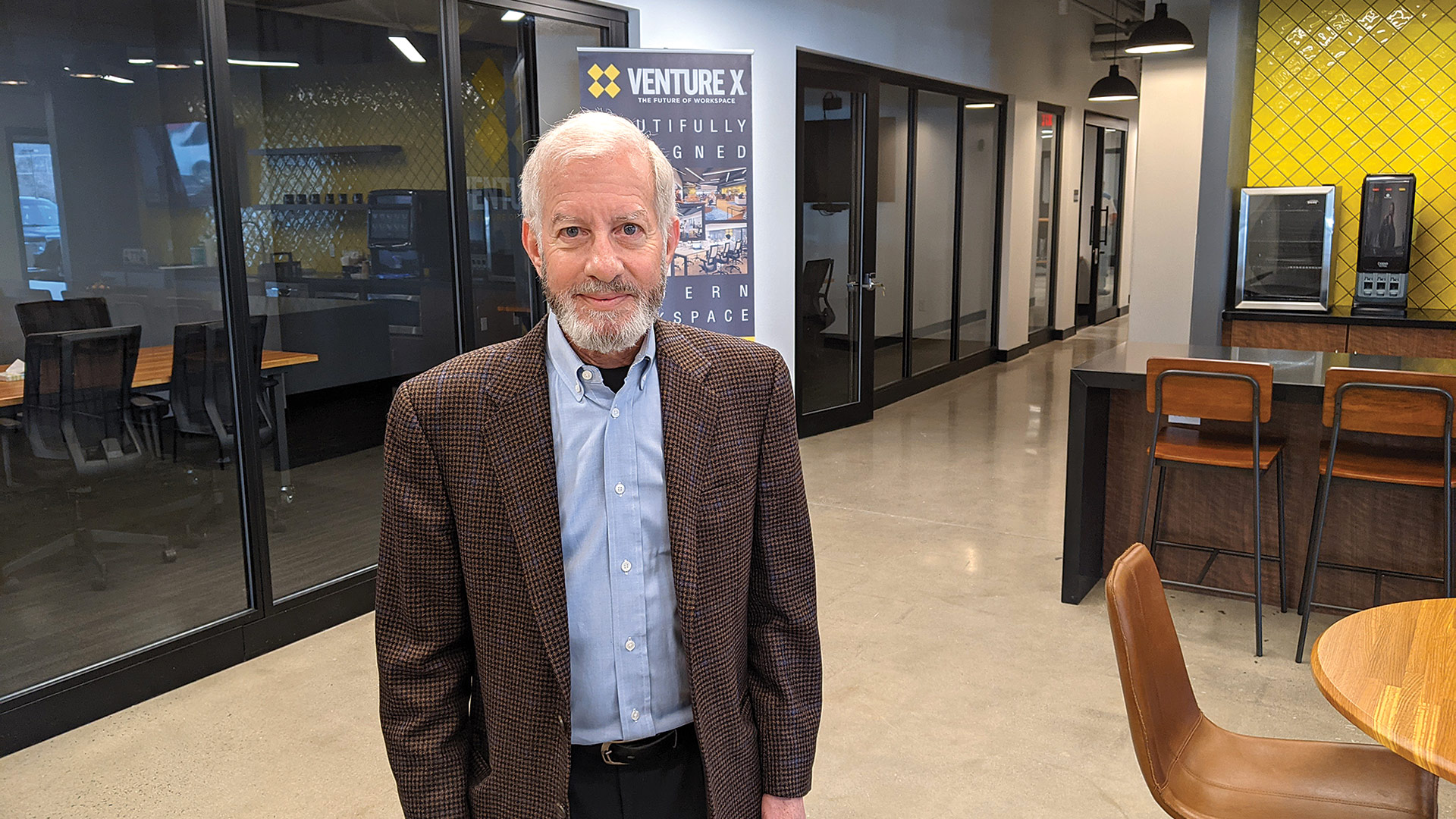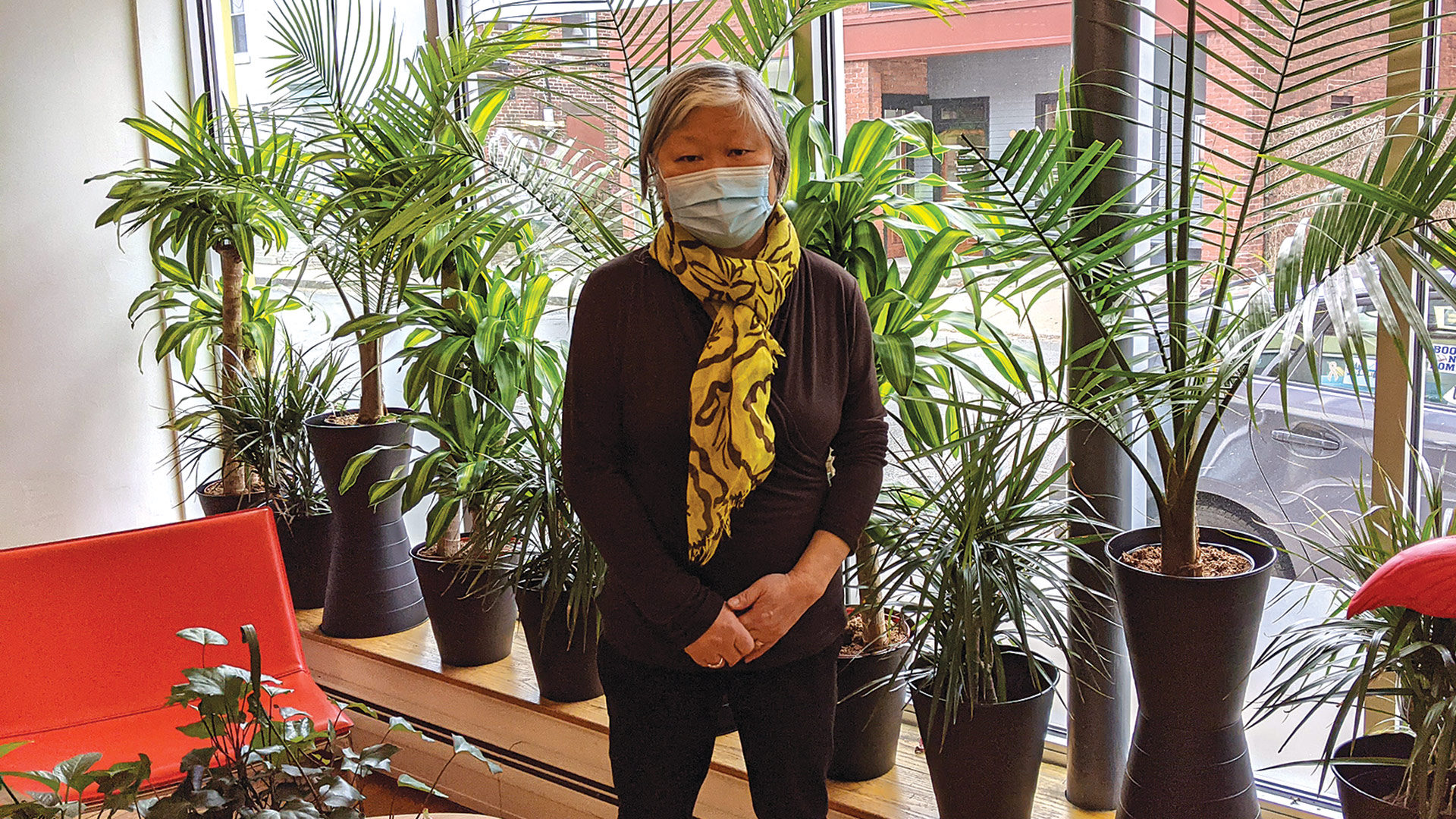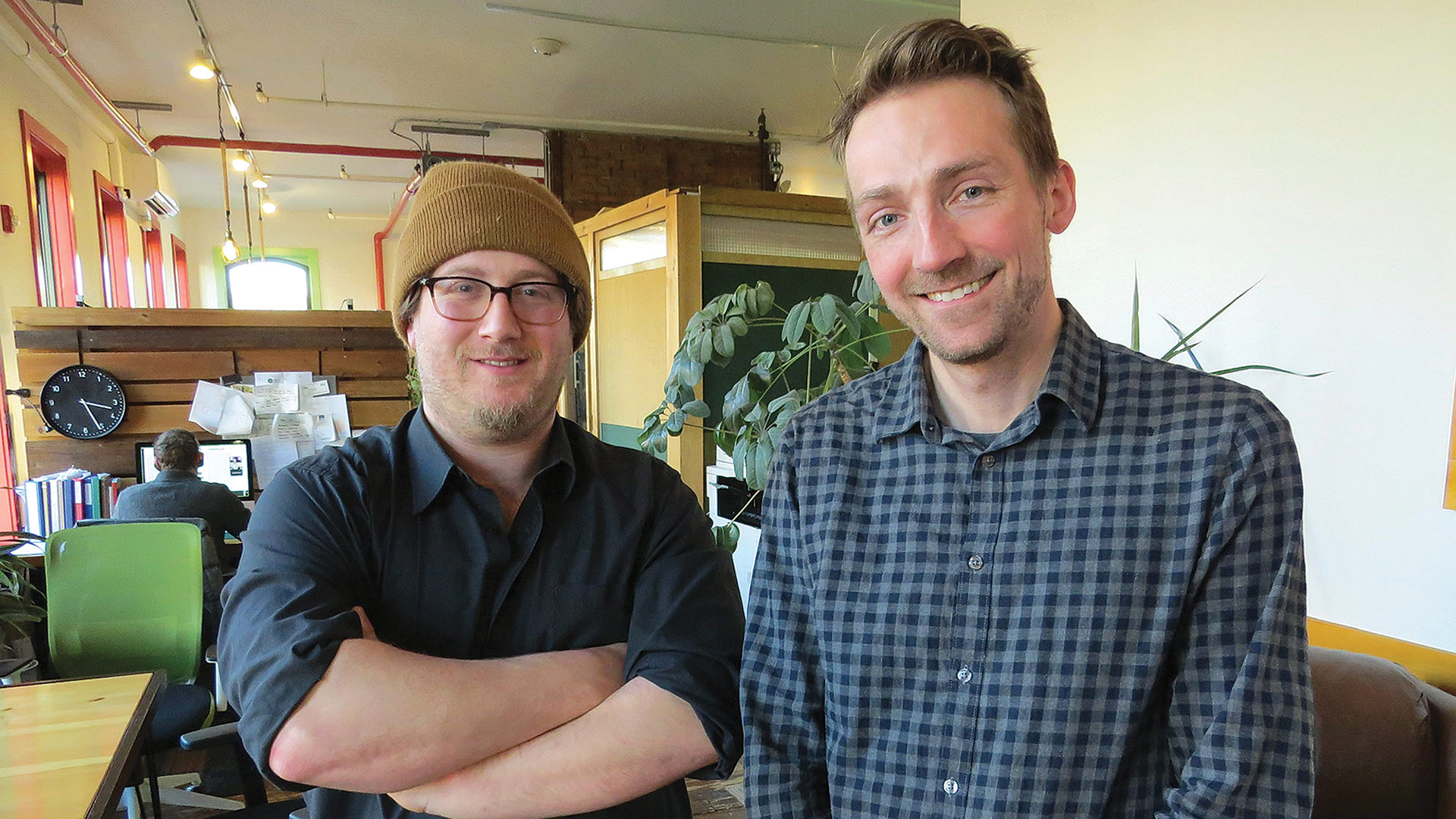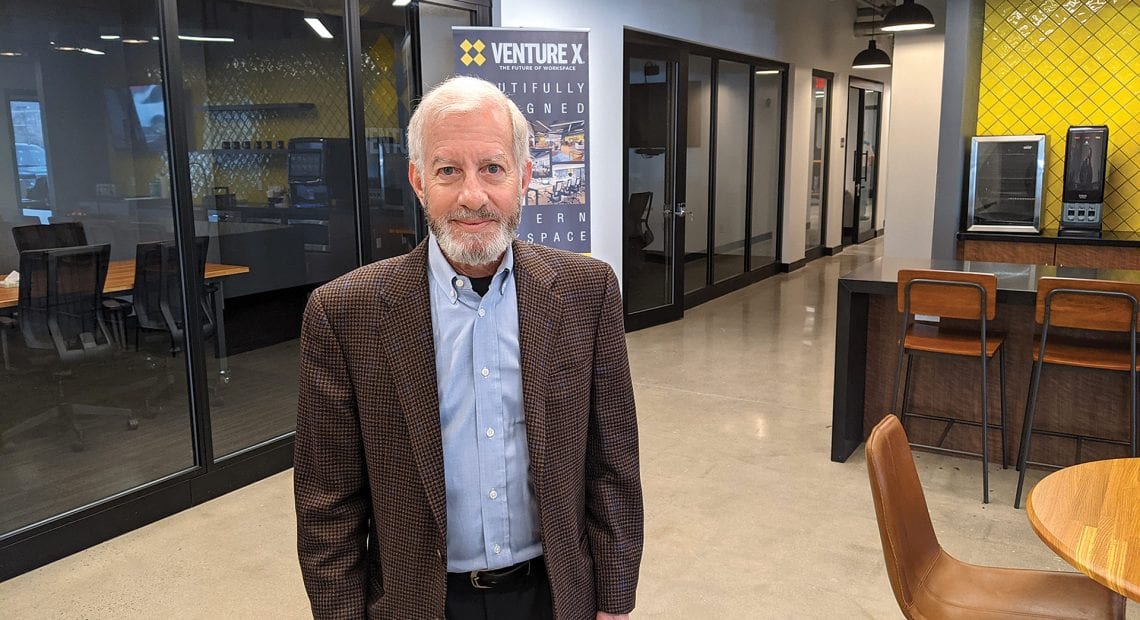Weathering the Storm

Ned Barowsky says flexible leases, as offered in the co-working world, will be more in demand in the future, and rigid, long-term leases less so.
Since launching Click Workspace a decade ago, Mary Yun has seen nothing but growth in one of the region’s first co-working ventures.
That growth led her to abandon her original 1,000-square-foot facility in 2015 and develop a 9,000-square-foot building in downtown Northampton, which, at its peak prior to the pandemic, hosted 80 members and a host of community arts and cultural events.
“That was a good number for us, where we could operate with a full-time member advocate and myself as executive director overseeing all the operations and also working on events,” she said. “We’re mission-driven, bringing in the community through art shows and music; that was my wheelhouse.”
With 80 members, all the private offices and dedicated desks were filled, as was the shared open space, for the most part, while a meeting room holding 24 people was regularly put to use by the community. In short, Click was … well, clicking.
And then COVID-19 arrived.
“We’re finding, now that the vaccine is being distributed and the sun is shining, so to speak, we’re getting a surge of new interest recently as people are starting to feel more comfortable coming back into the world. People are sick of working from home.”
“When the closures happened, we closed down like all businesses, and we still had members supporting us, paying their monthly dues for a while. We had members who were now working remotely from home,” Yun said.
But the erosion began almost immediately.
“We had always maintained a good number of members who had private offices that were being funded by their companies. At their businesses, they were the remote workers,” she went on. “But, because everything was now remote, that benefit went away for a lot of our members, so we lost a handful.”
When Click reopened at the end of May, around 55 members were still supporting the space, paying their dues, even though not everyone was coming in regularly — usually, no more than a dozen at a time through last summer. A few members actually joined during the pandemic — some with their career situations in flux, others who needed a place to work because their homes were suddenly too crowded by partners and kids working and learning remotely.

Mary Yun expects membership to rise to its former high levels after the pandemic fades, but it may be a gradual process.
But it wasn’t enough. “Right now, we’re down to less than 30 members, which is a huge drop in revenue,” Yun said. “Right now, our membership is lower than when we first moved into this building almost six years ago.”
The basic concept behind co-working is simple. It’s a workspace where people can share a table or an office; access fast internet service and shared resources like a copier, conference rooms, and audio-visual equipment; and make the kinds of connections that inspire further growth and success.
The pandemic has impacted the model in the short term, but the people operating area co-working spaces believe it’s a model with plenty of potential in the long term, and perhaps even more than before COVID-19.
“Like most businesses, we definitely lost some business,” said Jeff Sauser, who co-owns Greenspace CoWork in downtown Greenfield with Jeremy Goldsher. “No one knew what to expect, and we managed to be as flexible as possible with members; those relationships are important to us. We gave every opportunity to pause membership and make changes.
“We lost a chunk of memberships — not everybody; some stayed on, even though they weren’t coming as often — but we were able to stay afloat and survive,” he went on. “We’re finding, now that the vaccine is being distributed and the sun is shining, so to speak, we’re getting a surge of new interest recently as people are starting to feel more comfortable coming back into the world. People are sick of working from home.”
As a consultant for a Boston-based company that used to have four offices there and now maintains just one, Sauser sees first-hand the way workplaces are evolving — and in a way that may benefit co-working facilities.
“People don’t come into work every day anymore. We expect more people will have more flexible working arrangements with their employees.”
Yun agreed, noting that many of Click’s members left because their kids were learning at home — which is sure to be a temporary situation; in fact, many schools have already invited students back to campus. She believes an increase in membership at Click is inevitable, though it may take some time.
“People are saying, ‘I’m sick of living in the city and running the rat race. I can live where the living is good but keep my big-city job.’ I feel co-working spaces are an early indicator of trends that will benefit towns, especially towns with great, walkable downtowns.”
“I think what’s going to happen is, when kids go back to school in the fall full-time, parents will be like, ‘maybe I can make it work at home,’ and continue to work at home, and in a couple months, they’ll start to get lonely — professionally lonely — and start to come back, which is why they came here in the first place,” she told BusinessWest. “Really, I’m hopeful and optimistic.”
Stroke of Inspiration
Ned Barowsky was certainly optimistic when he launched a franchise of the national co-working company Venture X in Holyoke, right next to the Holyoke Mall.
He’s owned the retail and office complex at 98 Lower Westfield Road for 25 years, and faced a series of vacancies over the past couple of years the departures of Pier One Imports, Kaoud Oriental Rugs, and a series of mattress stores. For six months, two brokers assigned by a large, national real-estate firm had been trying to fill the vacancies, to no avail. That’s when Barowsky was inspired to by the co-working model.
“I had done a couple franchises in the past; I was familiar with franchising, so I started looking at co-working spaces,” he said. “I just knew that everything was being shut down, and when people come back out, they’re not going to go back to these five-year leases, 10-year leases. People aren’t going to do that anymore. They’re going to want flexible plans — ‘I want to be here for a month, three months, six months, a year, and with a smaller footprint.’”
When he started researching a few companies, he was “blown away” by Venture X, which tags itself “the future of workspace.”
“That’s our tagline, but it literally is the future of workspace. It’s flexible — you decide how many of each kind of office you want,” he said, noting that some franchisees opt to emphasize shared space, but his facility includes fewer shared stations and about 65 offices, in several sizes, to house any number of workers. “I wanted more offices, so that’s what I did — I put in more offices.”

Jeremy Goldsher (left) and Jeff Sauser say robust co-working spaces can be economic drivers for communities.
Sauser sees the potential, too, in companies downsizing their space and offering more flexible arrangements to workers — partly because of what they learned during the pandemic, when they saw how productive employees could be while working remotely. And that has implications for entire communities.
“I think co-working spaces are very well-positioned to receive those people,” he said. “I’m an urban planner — I’ve been thinking about this stuff long before the pandemic hit. A lot of trends show that, if people can work more flexibly, and make decisions about where they live based on lifestyle and not where the jobs are, people can move where they want to.”
He pointed to surging real-estate sales in Western Mass. and in the suburbs outside large cities like Boston.
“People are saying, ‘I’m sick of living in the city and running the rat race. I can live where the living is good but keep my big-city job,’” Sauser said. “I feel co-working spaces are an early indicator of trends that will benefit towns, especially towns with great, walkable downtowns.”
A lot of towns in Western Mass. offer that already — Greenfield has a walkable downtown, with opportunities to work in a co-working space, so it can be more competitive attracting new residents,” he went on. “I think of it as economic development for communities, not just for businesses like ours.”
Several years ago, Sauser and Goldsher met at a Franklin County Community Development Corp. event and were soon talking about the co-work concept, which Goldsher had seen flourishing while living in New York City. They say members are attracted to co-working for a number of reasons, among them lower prices than traditional office rent, flexible leases, and shared resources ranging from a printer, projector, meeting space, and wi-fi to a kitchen with free tea and coffee.
The pandemic actually revealed new opportunities for co-working spaces, Sauser added, from remote workers who live in rural communities with poor broadband access to college students who needed the space when campuses were closed, to working parents who craved a break from their suddenly bustling house.
“And we were honored to see a lot of members choose to stick with us and extend their membership even when they weren’t using the physical space,” Goldsher added. “Before this, the concept of co-working was a novelty, but we brought an urban concept to a smaller community and showed the model does translate in a different way. Now a lot of other opportunities are presenting themselves.”
Bills, Bills, Bills
Yun had a broader vision as she grew Click — one centered around the arts as an economic driver, with gallery shows, music performances, literary events, and the like, to emphasize Northampton’s cultural heritage while exposing new faces to Click’s eclectic space. That aspect of the complex has been wiped out during the pandemic.
“It’s been a hardship for the people who have been coming in — there’s very little community left right now with so few coming in,” she said. “We’re eking by, but we’re going to make it. I think a lot of it is because we operate as a nonprofit, so we had reserves built up, and we’re dipping into those reserves now.”
PPP loans, a Massachusetts small-business grant, and rent reduction have helped, but the complex will eventually need to boost its membership back up.
“It doesn’t matter whether you have one person here or 50; you have all these fixed expenses,” Yun said. “There may be a little bit of give in the rent, but we have to pull in fiber-optic internet — that’s a huge cost for us, almost $900 a month. All the utilities are fixed. Last summer, I said to myself, we need to be able to sustain ourselves until the summer of 2022 because I felt like that was going to be when the recovery was in full swing for us.”
That timeline seems more accelerated now, but she feels like the return to normalcy will still be a gradual one. “Do all the former members come back? A lot have moved on, and co-working is such that people come and people go all the time.”
The pandemic saw an influx of residents from New York to Western Mass., but many of them have purchased large homes with home offices, so it’s unclear what effect that migration will have on co-working. “It seems daunting, but we’ve been open for over five years here now, and I feel like we’re here to stay. Who knew we’d have a pandemic?”
To counter that still-active pandemic, Click, like every other workspace, has launched a series of safety protocols, from requiring masks when moving about to regular sanitization to pumping in fresh air.
Air quality was a big concern for Barowsky at Venture X as well. “During COVID, I was very cognizant of air-filtration systems. I spent well over $100,000 on seven rooftop units,” he said, in addition to investments in touchless bathrooms, numerous hand-sanitizer stations, and a keyless entry system.
Greenspace takes safety seriously as well, Sauser said. “From a COVID safety standpoint, we follow all the state guidelines and have protocols in place — cleaning, masks, sanitizers.”
Goldsher added that the state’s rules early on made little sense, noting that Greenspace was not designated an essential business, but — unlike Click — stayed open throughout the pandemic anyway because one of the companies it houses was deemed essential, and had to continue using the space.
“While I think we proved that we are a very necessary asset in the community, there’s this strange dichotomy being open for essential business and not being considered an essential business ourselves.”
Here to Stay
But those who own co-working spaces in Western Mass. — other prominent centers include AmherstWorks, 734 Workspace in Longmeadow, and Cubit Coworks in Holyoke, to name just a few — say they are indeed an essential part of the 21st-century economy.
“I think the future of the workplace is very much up in the air. There’s no way to predict what the open concept will look like in five years time, but we have some good ideas,” Goldsher said.
Sauser agreed that the future of the workplace is in flux, but suggested that the office of the future might look much like co-work spaces of today, “where flexibility is the emphasis, in part because office managers and companies dedicate less space to individual employees when employees are not coming in every day.”
Yun added that companies have decisions to make about whether to extend their traditional leases or move toward more flexibility and smaller footprints. That, in turn, could drive the next surge of growth in co-working, and she welcomes more such facilities, because each new complex will raise awareness of the model and its benefits.
“We don’t know how all this will shake out,” she said. “But the more co-working spaces exist, the better.”
Joseph Bednar can be reached at [email protected]






